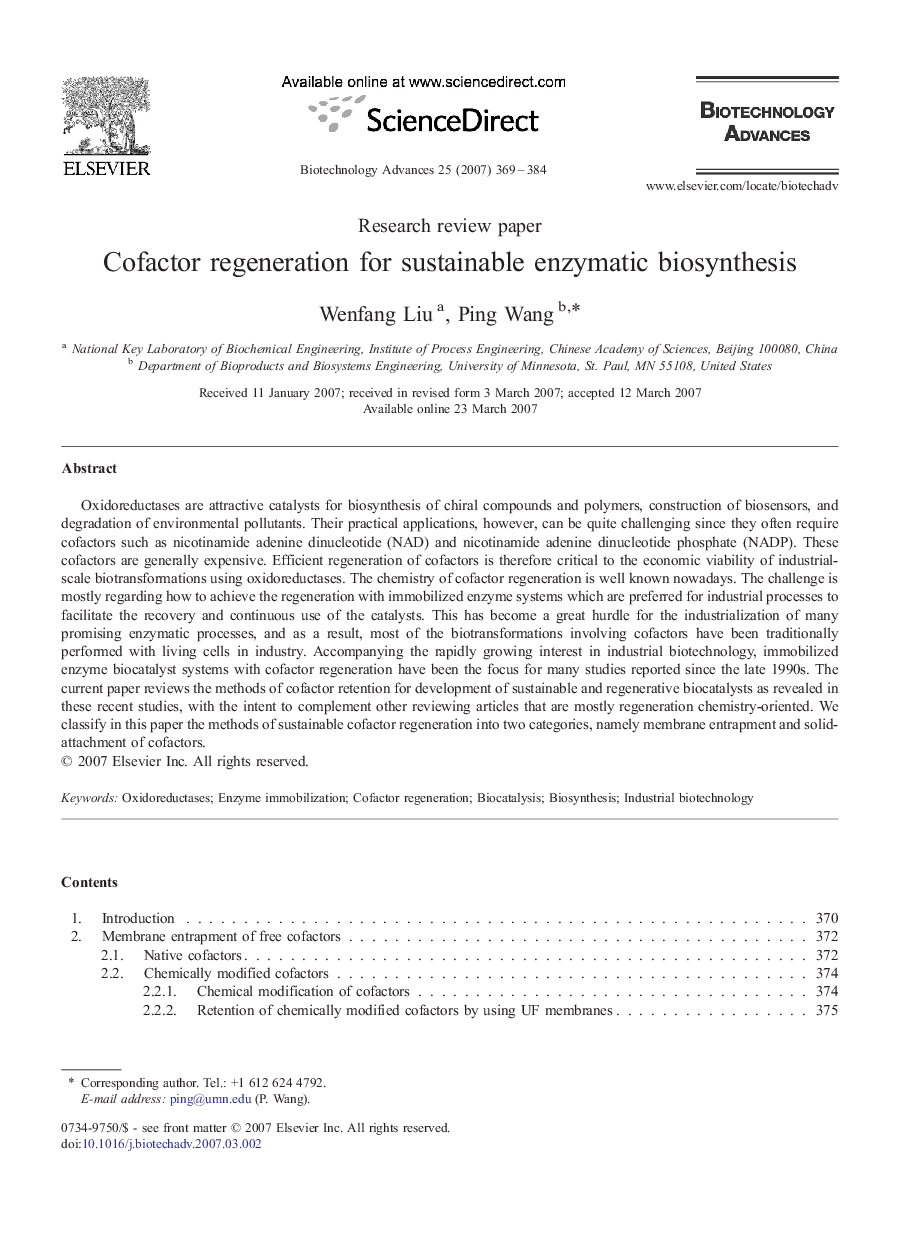| Article ID | Journal | Published Year | Pages | File Type |
|---|---|---|---|---|
| 14637 | Biotechnology Advances | 2007 | 16 Pages |
Oxidoreductases are attractive catalysts for biosynthesis of chiral compounds and polymers, construction of biosensors, and degradation of environmental pollutants. Their practical applications, however, can be quite challenging since they often require cofactors such as nicotinamide adenine dinucleotide (NAD) and nicotinamide adenine dinucleotide phosphate (NADP). These cofactors are generally expensive. Efficient regeneration of cofactors is therefore critical to the economic viability of industrial-scale biotransformations using oxidoreductases. The chemistry of cofactor regeneration is well known nowadays. The challenge is mostly regarding how to achieve the regeneration with immobilized enzyme systems which are preferred for industrial processes to facilitate the recovery and continuous use of the catalysts. This has become a great hurdle for the industrialization of many promising enzymatic processes, and as a result, most of the biotransformations involving cofactors have been traditionally performed with living cells in industry. Accompanying the rapidly growing interest in industrial biotechnology, immobilized enzyme biocatalyst systems with cofactor regeneration have been the focus for many studies reported since the late 1990s. The current paper reviews the methods of cofactor retention for development of sustainable and regenerative biocatalysts as revealed in these recent studies, with the intent to complement other reviewing articles that are mostly regeneration chemistry-oriented. We classify in this paper the methods of sustainable cofactor regeneration into two categories, namely membrane entrapment and solid-attachment of cofactors.
